Annie Leibovitz is standing by a photograph she took of Pont Neuf in Paris. It’s a swirling panoramic shot of the famous bridge, taken when she was a student and would roam the city’s streets camera in hand. One day, with a thrill, she realised she was standing where her idol, Henri Cartier-Bresson, once stood to take his own ghostly grey picture of the Seine crossing.
Leibovitz’s homage to the great French photographer did not stop there. Her latest exhibition – Annie Leibovitz: The Early Years, 1970-1983 – also features a remarkable shot of Cartier-Bresson himself. The notoriously camera-shy Frenchman glares into her lens. “He wouldn’t let me photograph him,” says Leibovitz. “So I studied his route to work every day and planted myself on a bridge and waited. ‘You!’ he said, when he saw me. Then, ‘All right – take the picture.’”
The exhibition, subtitled Archive Project No 1 and showing at Hauser & Wirth in Los Angeles, contains a whopping 4,000 photographs. They span the early years of Rolling Stone magazine, where Leibovitz cut her teeth, and lucidly capture the era’s defining moments, from President Nixon’s inglorious departure from the White House by helicopter in 1974, to the extraordinary Democratic convention two years before, in which sessions lasted until sunrise. The landmark event, which took place in Miami, was the basis for Fear and Loathing on the Campaign Trail ’72, the political classic by Rolling Stone’s resident gonzo journalist Hunter S Thompson.
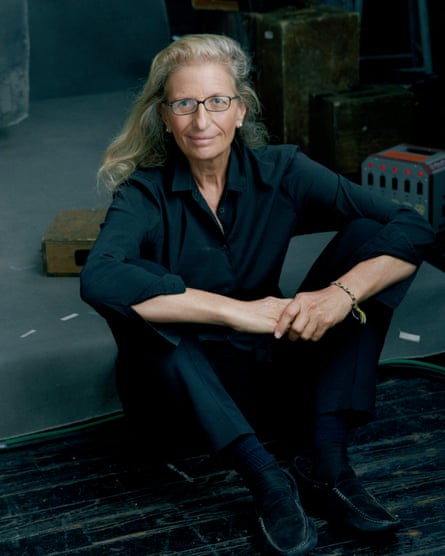
“It’s a show about photography,” says Leibovitz. “I can stand outside of myself and look back at this young photographer learning how to take pictures, learning how to see.” That young photographer didn’t just have a front row seat at the cavalcade of American history. Reflecting the changing cultural role of photography itself, Leibovitz eased from photojournalism into portraiture, taking striking shots of the era’s great artists, from Andy Warhol to Richard Avedon, from Ansel Adams to that ambush shot of Cartier-Bresson.
But it was her pictures of celebrities that really made her name: the cover shots for Rolling Stone, Vanity Fair and Vogue that included a topless Miley Cyrus at the age of 15 and a pregnant Demi Moore wearing only a 30-carat diamond ring. These two iconic shots prefigure her more recent shot of Serena Williams, nude and pregnant. Her latest cover, for Vanity Fair, is of Beto O’Rourke, who recently announced his intention to run for the 2020 US presidency. It is these images that have made Leibovitz that rare thing: a celebrity photographer.
Many of her most recognisable shots aren’t in this new show, though they will presumably turn up in a future Archive Project. Until then, we get the photographer Leibovitz was before she ventured into the studio, still out in the field and caught in the moment, finding light and composition on the hoof. “In these years,” she says, “I’m forming. I’m a huge fan of photography, of course. This started in school with Cartier-Bresson and Robert Frank.” School was the San Francisco Art Institute, a college that, in the 1940s, boasted Ansel Adams as head of photography.
Tall and rangy, with glasses and greying blond hair set off by her black ensemble, Leibovitz has a friendly demeanour befitting her folksy Connecticut roots. It’s easy to see how she could crack Cartier-Bresson, or disarm Mick Jagger. The Stones frontman appears in the exhibition dressed in a robe with a towel on his head, glowering like a prizefighter from inside a lift. Showing portraiture to be her emerging strength, the shot was taken when Leibovitz toured with the band in 1975. There’s an entire wall dedicated to the tour, testament to the photographer’s total immersion in her subject. Exhilarating but gruelling, the experience taught her a vital lesson about knowing your limits.
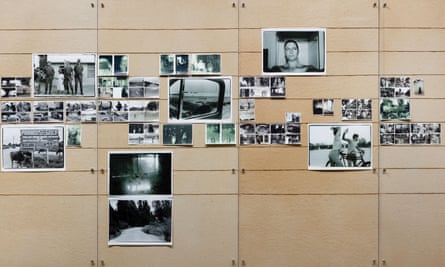
“The show is a kind of ode to a young photographer,” she says. “The whole idea, bringing all this work out of boxes, was to show what you have to do if you want to do this. You’re going to have to be insane, obsessed – and live it and eat it.”
The show ends in the early 80s, just as Leibovitz is moving into the studio and creating the kind of fantasised portraits that became synonymous with her name: David Byrne, colour coordinated, prim, civilised, with a touch of the wild in a jacket made of leaves; Meryl Streep behind a mask of white paint, pinching her face out of proportion. It seems to reveal nothing about Streep. It just lets the viewer project on to her face, a perfect illustration of the actor’s craft.
“I kind of know what people kind of want to look like,” says Leibovitz. “I can’t always achieve it. It’s like I’m a pushover. I really like to please. This is their life and I like to let them get to wherever the next step is they want to get to. I have no reason not to.”
Leibovitz found photographing celebrities intimidating in the beginning, because she was inevitably confronted with the same first question: “What do you want me to do?” She had no answer. Her breakthrough moment comes towards the end of the show, with poets Tess Gallagher and Robert Penn Warren, both photographed for Life magazine.

“I read their poetry and I started to think how interesting it would be if I could show what their poems look like, what they were writing about. It was part of the portrait. And it was a significant beginning. I find myself now trying to crawl back to this kind of work. You look back at your work – to learn what you should do to go forward.” At the last moment, she asked Warren to take off his shirt, transforming the shot into a moment of vulnerability. The septuagenarian poet seems to be baring more than just his chest.
If Leibovitz has a most famous cover, it’s the one for the January 1981 issue of Rolling Stone, featuring a nude John Lennon curled up alongside a fully clothed Yoko Ono. The plan was to shoot them both nude, but Ono demurred. It’s the last photo ever taken of Lennon, who was shot and killed hours later. Leibovitz was supposed to meet them at the studio that night, but got a call from Jann Wenner, Rolling Stone’s co-founder and editor, saying someone matching Lennon’s description had been taken to hospital.
As a working photographer, Leibovitz is hesitant to say too much about her subjects, but does sympathise with child stars who, in her eyes, often struggle to hold on to reality. She also mentions the more serious actors – the likes of Streep, Daniel Day-Lewis and Vanessa Redgrave – who would rather not be photographed at all. And then there’s a strange breed, one that unsettled her. “People like Johnny Depp or Nicole Kidman – I went kicking and screaming to this idea that there actually were people who the camera did love. I refused to believe that at first. I had to come to terms with the fact that there are photogenic people.”
Not particularly photogenic wasWarhol, who is seen in various shots with the writer Truman Capote, the director Paul Morrissey and the fashion editor Diana Vreeland. “He was everywhere,” she says. “I guess you could say, if he was at all those different places, I was, too.” She shrugs. “He hardly talked until he walked around with a tape recorder. Then he started talking and you sort of didn’t want him to. It was like, ‘It’s OK, Andy, don’t talk – you were more mysterious that way.’ It was such a shock when he died because he was such a fixture. It was a real loss. He was a genius.”
Singer-songwriter Patti Smith made the trip west for the opening-night party at Hauser & Wirth that brought out other notables such as artist Paul McCarthy and film-maker Sam Taylor-Johnson. “I asked Patti if she’d come and play. She said, ‘Annie, I’ve known you 30 years. I’ll be there.’” She was as good as her word and rocked through an acoustic set that included Ghost Dance and the classic Because the Night.
In the late 70s, Leibovitz went on a three-city tour with Smith and they’ve been friends ever since. Leibovitz recalls once shooting Smith for the cover of Rolling Stone. She wanted Smith to pose in sheer shirt and bra, which would be set off by a line of flame in the background. “I built this rope of fire behind her,” says Leibovitz. “And she got burned – literally. Her back was red for days. We were totally illegal. We put kerosene in some barrels and it just started shooting out.”
The cover of Smith’s 1975 debut album, Horses, was taken by the singer’s close friend Robert Mapplethorpe. It is considered one of the greatest album covers of all time. Leibovitz talks of “the ghost of Mapplethorpe” being around Smith. “I always thought she was Mapplethorpe’s muse,” she says. “I talked to her about that, like I was intruding, especially after he died. I felt very awed of Robert, how he sort of created her imagery.”
Leibovitz is currently on the campaign trail with Beto O’Rourke, though she is not allowed to discuss the project. In 2016, she was in the press pool covering Hillary Clinton’s bid and, like many, feels there’s an urgency to the role of the press in the present political climate. “I’m so proud of journalism today,” she says. “No one’s cowering. They’re holding their ground. When you start working with Rolling Stone, how could you not be interested in journalism? Eugene Smith and Larry Earl, segueing into Richard Avedon, Diane Arbus and Helmut Newton.” Her voice trails off as she looks at the thousands of photographs around her. “It just goes on and on and on.”
These days, with most of us carrying high-quality cameras in our phones, photos are ubiquitous, with amateurs posting an endless stream of frequently compelling images. The problem, however, is that we consume them as fast as we produce them, clicking to the next one in seconds. If Leibovitz is bothered by this lack of consideration, she hides it well. Instead, she seems sanguine, welcoming the prevalence of images and the photographic instincts their presence implies. “I don’t fight it,” she says with a smile. “It’s interesting to have all this imagery out there. It’s powerful.”

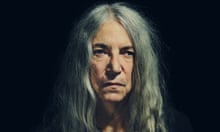
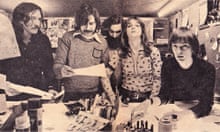

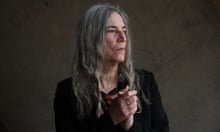



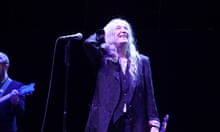
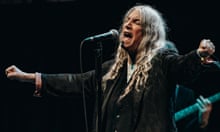
Comments (…)
Sign in or create your Guardian account to join the discussion